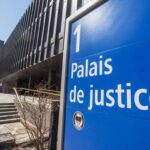As flames continue to threaten communities across northern Saskatchewan, provincial officials have taken decisive action by doubling emergency financial support for displaced residents. The announcement comes as firefighters battle against an unprecedented early wildfire season that has already forced thousands from their homes and stretched emergency resources to their limits.
Premier Scott Moe revealed yesterday that individual assistance will increase from $2,000 to $4,000, while household support jumps from $4,000 to $8,000, providing critical relief for evacuees facing extended displacement. “When families are forced to flee with little more than the clothes on their backs, the financial burden becomes overwhelming,” Moe stated during the press conference in Regina.
The Saskatchewan Public Safety Agency reports that over 3,600 residents have been evacuated from northern communities since early May, with many unable to return home as firefighting efforts continue. The enhanced financial assistance program aims to help cover immediate necessities including temporary accommodation, food, clothing, and other essentials that evacuees require while away from their communities.
This escalation in support comes amid growing criticism from opposition leaders and community advocates who argued the initial assistance package failed to address the scale of the crisis. Buffalo Narrows resident Marie Durocher, currently sheltering in Saskatoon with her three children, expressed relief at the announcement: “Every additional dollar helps when you’re starting from nothing. We left with just a suitcase each, and everything adds up quickly when you’re trying to maintain some normalcy for your kids.”
The intensified wildfire situation has created unique challenges this season, with fires starting nearly a month earlier than historical patterns. According to provincial data, more than 140 active wildfires are currently burning across Saskatchewan, with at least 26 classified as uncontained. The northeastern regions have been particularly hard-hit, with communities around La Ronge and Buffalo Narrows facing the most severe threats.
Climate scientists from the University of Saskatchewan point to increasingly volatile weather patterns as a contributing factor. “What we’re witnessing aligns with climate projection models that predict longer, more intense fire seasons across the boreal forest region,” explains Dr. Hannah Reynolds, environmental science professor. “The combination of earlier spring thaws, decreased winter precipitation, and extended dry periods creates ideal conditions for wildfire proliferation.”
The provincial government has allocated an additional $42 million to the emergency wildfire response, beyond the increased individual assistance. These funds will support expanded firefighting operations, additional equipment procurement, and emergency coordination efforts. Officials have also requested federal assistance, including military support for evacuation operations and specialized firefighting equipment.
For affected residents seeking to access the enhanced financial aid, the Saskatchewan Public Safety Agency has established an expedited application process. Evacuees can apply online through the provincial emergency portal or in person at designated reception centers in Prince Albert, Saskatoon, and Regina.
As communities across northern Saskatchewan face an uncertain timeline for return, the question remains: will this enhanced financial package be sufficient to address the long-term impacts of what meteorological experts are already calling a transformative shift in the province’s wildfire patterns?

























